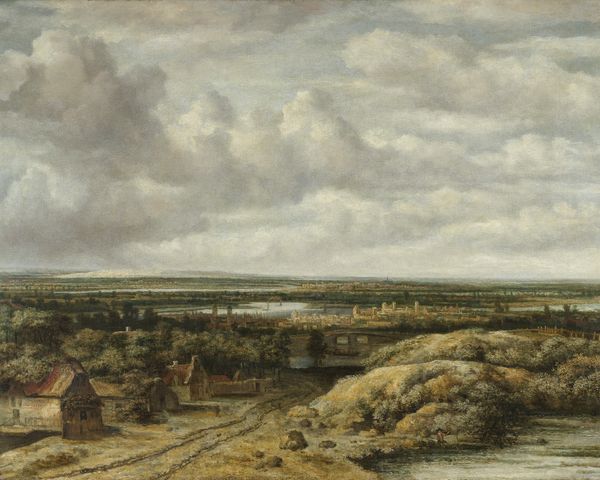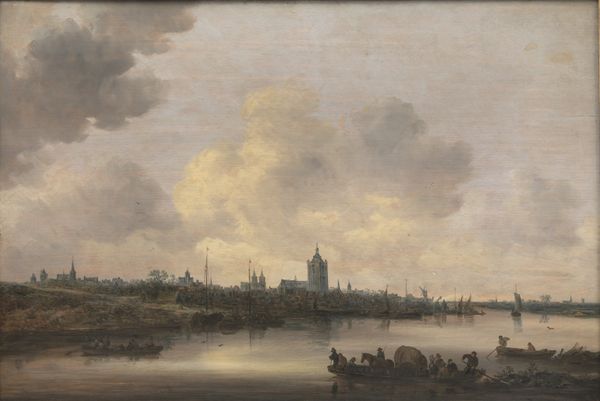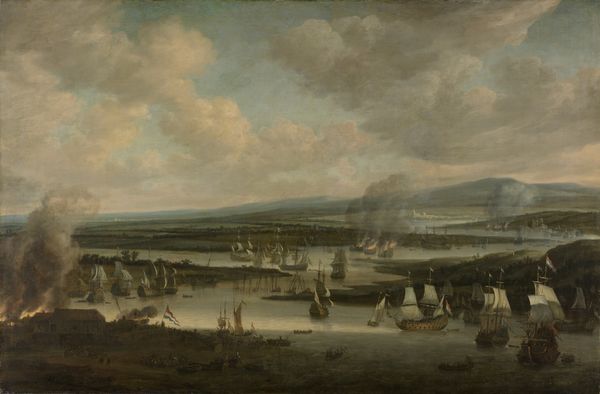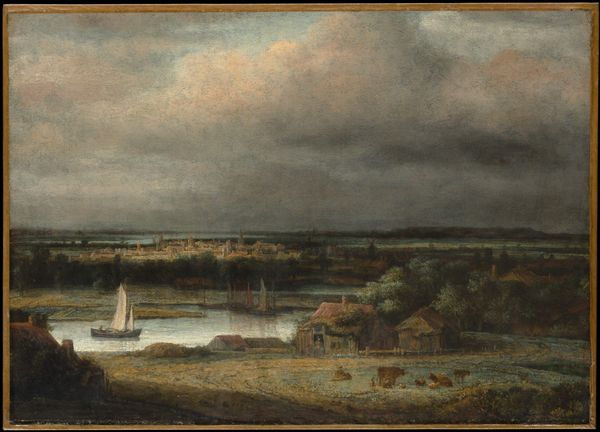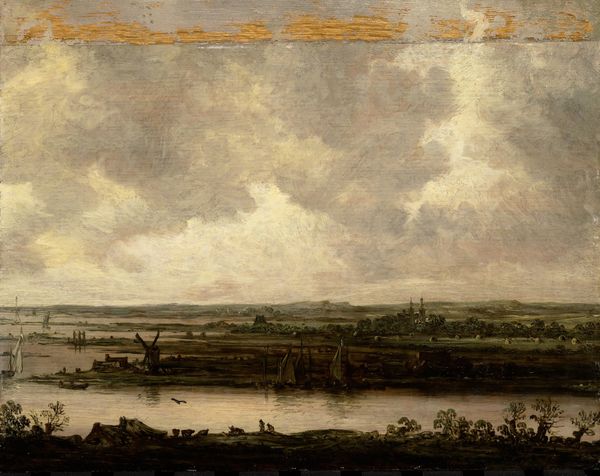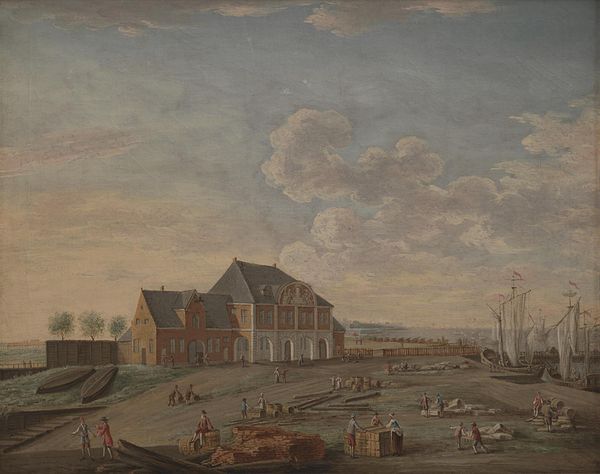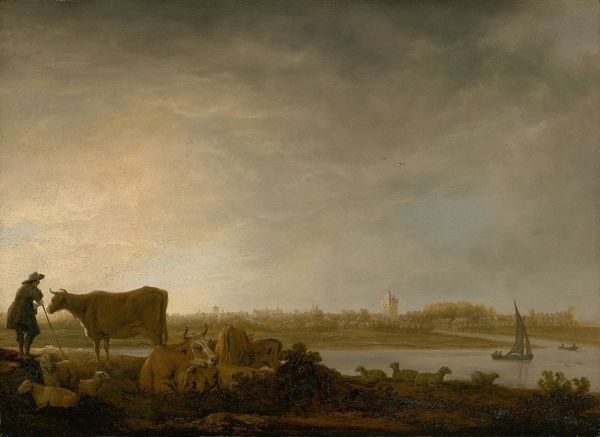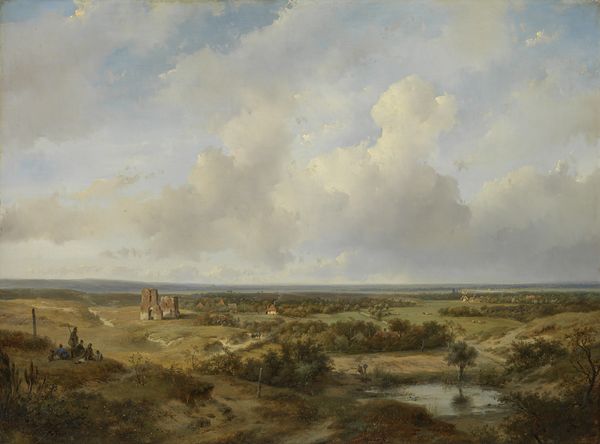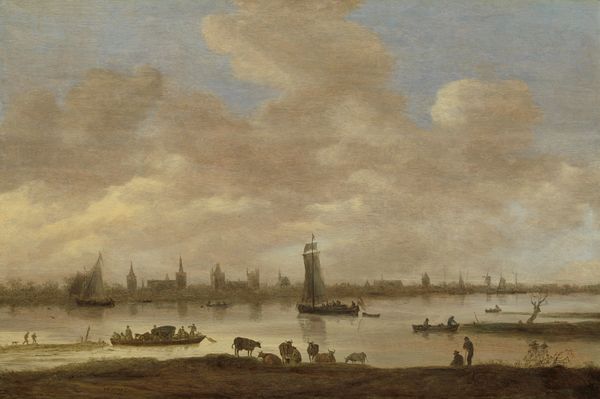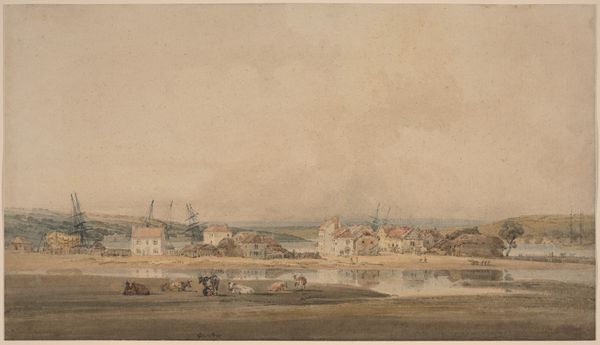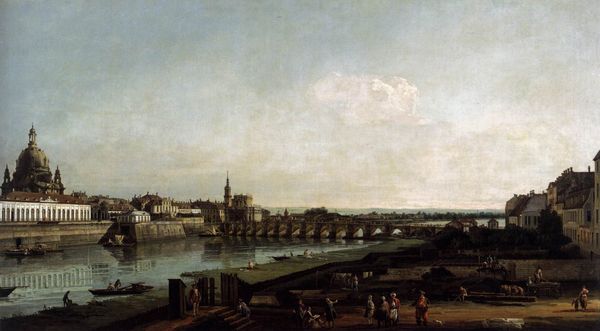
painting, oil-paint
#
dutch-golden-age
#
painting
#
oil-paint
#
landscape
#
oil painting
#
cityscape
#
realism
Dimensions: 71.6 cm (height) x 91.6 cm (width) (Netto)
Editor: Here we have an anonymous painting, "Landscape," made with oil paint sometime between 1634 and 1688. The rendering is very interesting, the colours feel muted, almost brown and desaturated and a low-lying fog. What can you tell me about this piece? Curator: Well, considering the time period and the extensive use of oil paint, it's important to analyze the pigment. This type of earth-toned color scheme often meant the use of readily available, and thus cheaper, pigments. Were they attempting realism or reflecting economic constraints on the artist, workshop, or patron who commissioned it? Editor: That’s an interesting perspective. So, you're focusing less on the subject matter—the landscape itself—and more on the physical components of its creation and how that affects meaning? Curator: Exactly. The brushstrokes themselves tell a story of labor. Notice the uniformity in the application of paint in the sky versus the details given to the figures in the foreground; there may have been different people with different skill levels applying the paint to the canvas. Also, we could explore the availability and trade of materials during this period. Editor: I see. So, the origin and trade of pigments and the artistic skill or status implied by brushwork, adds layers of understanding beyond the serene landscape depicted? Curator: Precisely. Consider the linen canvas itself – its weave, its preparation. Was it locally sourced or imported? Each decision, from the ground up, is a reflection of the social and economic landscape within which the artist operated. Don't get me wrong, it’s pretty, but why it looks and feels “pretty” is critical here. Editor: So, understanding the process and materials opens up a richer appreciation for not just the artist, but also the culture that produced this work. I'll never look at landscapes the same way. Curator: Indeed. It shifts the focus from aesthetic appreciation to a more comprehensive understanding of production. It forces us to consider the conditions of making and how those conditions shaped the final product.
Comments
No comments
Be the first to comment and join the conversation on the ultimate creative platform.

